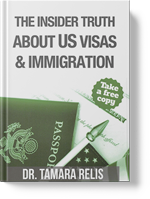
Among the options for those who are not citizens or permanent residents of the U.S. to come to the country for work-related purposes is the L-1 visa. This non-immigrant visa is also known as the “Intracompany Transferee” visa and is specifically geared toward employees of international companies that have a presence in the U.S. Because it is designated as a non-immigrant visa, those who hold an L-1 visa are not permitted to lawfully stay in the U.S. permanently. Depending on which country you are coming from and the nature of your position, you can stay for as long as seven years or as little as three months.
Employers who wish to bring employees over on an L-1 visa must start the process by filing Form I-129 with the USCIS, along with supporting documentation. Among other things, the employer must prove that its organization has a commercial relationship with the country of which the L-1 target is a citizen.
The company must have a connection through a parent-subsidiary relationship and branch-and-headquarters arrangement. Another adequate relationship could be sister companies with a mutual parent company, or two affiliates owned by the same company. After Form I-129 is approved by the USCIS, the target employee must complete Form I-797 and go to a U.S. consulate or embassy in his or her home country.
L-1A vs. L-1B, Regular vs. Blanket
Within the L-1 visa category, there are some differences between subcategories of the visa. L-1A visas are reserved for executives or managers employed by an international company; holders of L-1A visas can stay in the U.S. for up to seven years. L-1B visas, which can be used for up to five years, are for non-executives who have specialized knowledge that benefits the company with a presence in the U.S.
Additionally, there are two different types of L-1A and L-1B visas:
- Regular, which refers to individual applications made by each foreign employee.
- Blanket, which is given to qualified employers. Blanket visas are, essentially, pre-approved I-129 forms
L-2 Visas for Family Members
Fortunately for L-1 visa holders, there is an opportunity to bring over family members for the duration of the L-1 visa in use. The L-2 visa is limited to dependents (children under the age of 21) and spouses. Spouses—not children— may work during their stay in the U.S. after obtaining an Employment Authorization Document.
Conclusion
Though the process for coming over on an L-1 visa or bringing over foreign talent on that same visa seems straightforward, there are strict requirements that both sides need to follow in order to be successful. For example, the documentation must be sufficient and the target employee must have worked for the employer for one continuous year at any point in the three years before applying for the visa. Skilled immigration attorney Dr. Tamara Relis and her team is well-equipped to guide you to success with the L-1 visa; to discuss your options with the firm over a free 10-minute call, dial 1-800-514-4290 today.







